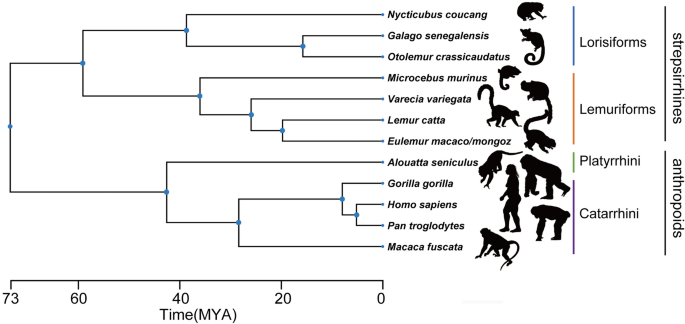Summary made by ChatGPT
This scientific study provides a comprehensive analysis of a novel evolutionary adaptation in the vocal anatomy of Madagascar’s lemurs, specifically the discovery of twin vocal folds. Unlike other primates, lemurs possess an additional pair of vocal folds in the larynx, which the study proposes contributes to a more efficient vocalization mechanism by lowering the fundamental frequency and enhancing vocal efficiency. The research utilized an interdisciplinary approach, combining micro-computed tomography (μCT) scans for anatomical studies, histoanatomical analysis for tissue examination, and silicone compound model simulations to investigate the acoustic function of these twin vocal folds. This innovative methodological framework allowed for a detailed exploration of the unique vocal capabilities of lemurs, positing that these adaptations may have evolved to facilitate more effective communication within their environment.
Discovery Details
The key discovery is the presence of a second pair of vocal folds (vestibular vocal folds or VVFs) in lemurs, which are anatomically and functionally comparable to the primary vocal folds. This adaptation is proposed to enhance vocal efficiency and lower the fundamental frequency of vocalizations.
Methodological Breakdown
- μCT Scanning: Provided detailed anatomical insights into the laryngeal structure of lemurs and other primates for comparison.
- Histoanatomical Analysis: Examined the tissue composition of the vocal folds, confirming their similarity to human vocal fold epithelium known for its resilience to mechanical stress.
- Silicone Compound Model Simulation: Mimicked the physical dynamics of the twin vocal folds’ vibration, demonstrating their potential to alter vocalization properties significantly.
Challenges and Opportunities
The study acknowledges limitations such as the lack of direct in-vivo evidence of the VVFs’ function in lemurs. Future research opportunities include in-vivo studies to observe these vocal folds’ function directly and explore the evolutionary pathways that led to this unique adaptation.
TLDR
Madagascar’s lemurs possess a unique evolutionary adaptation: a second set of vocal folds that potentially enhances their vocal efficiency and lowers the fundamental frequency of their calls. This discovery was substantiated through detailed anatomical, tissue, and acoustic function analyses, paving the way for future explorations into primate vocal evolution.
AI Thoughts
This study not only sheds light on the evolutionary complexity and adaptability of primate vocal anatomy but also opens new avenues for interdisciplinary research in evolutionary biology, acoustics, and primate communication. Understanding such unique adaptations can offer insights into the evolutionary pressures and ecological demands that shape species-specific communication strategies, potentially influencing future research in bioacoustics, conservation efforts for endangered species, and the study of human speech evolution.


